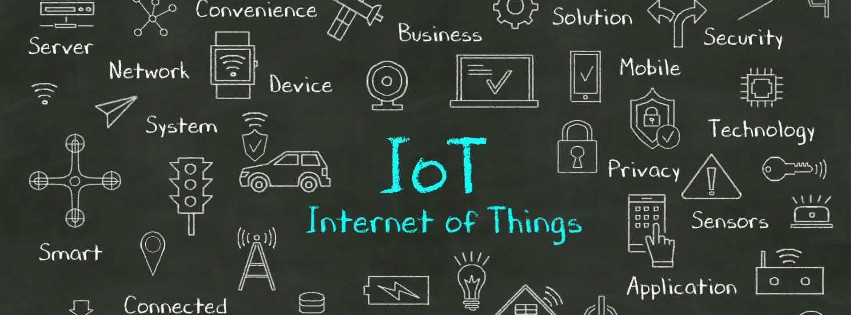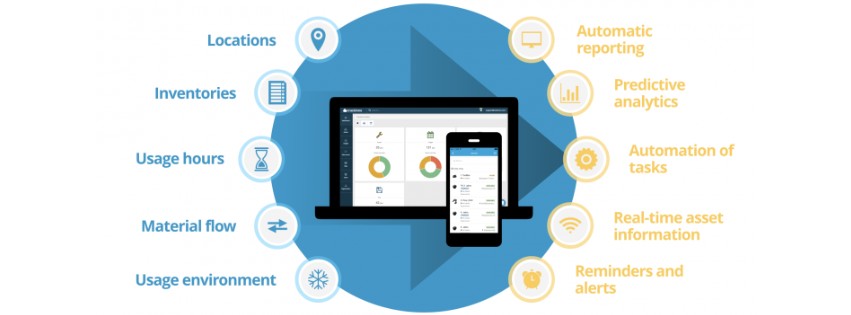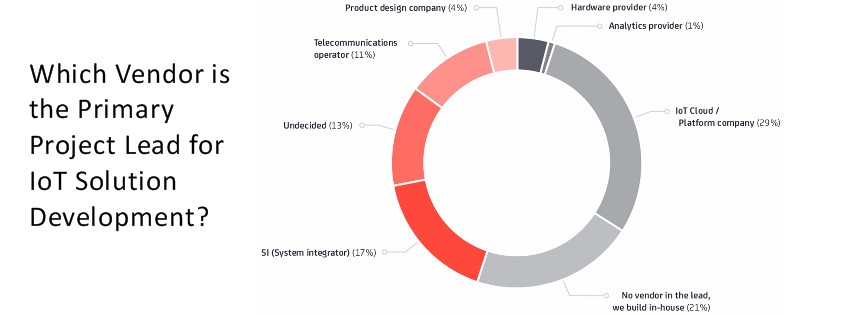
The IoT devices are enabling secure tracking of transported and mobile assets throughout the business supply chain. Identifying where business assets are located at any given time is critical to transforming the efficiency of a business's asset based operation. This up to date information allows companies to reduce theft and loss, save time and money while it improves operational efficiency. When a business considers the deployment of IoT technology they often realize extending the corporate information system can be complex. An IoT deployment can be done effectively and efficiently, or it can become a logistical nightmare, with an expensive and complex deployment that stifles any real benefit. To properly leverage an IoT Asset deployment a business must review these 10 key discovery points before it begins the IoT device deployment process for asset tracking.

1. What New Applications or Services Will the Business Support?
Modifying a business so it is IoT network compatible includes increasing organizational core competencies in very specific areas. New applications will be required to support, a new technical and extended physical infrastructure with new skillsets required to acquire, hire and manage. A whole new foundation and metric for success will be detailed. The business must begin with new definitions of what will constitute success for the project. Companies can attend Industry conferences, gather resources and white papers to helo understand what the IoT is and what elements will be required to have successful deployment of an IoT solution deploy. Last Mile Technologycan help identify potential areas to achieve a solid ROI on IoT with your new IoT device based strategy.
2. Companies need to build once and plan for the application to scale
Many companies focus on the proof of concept for IoT deployment and do not consider whether the solution is scalability. If a company understands and plans for the deployment to scale from the beginning it will move in a seamless, expedient manner from design prototype to company wide deployment.
3. The company must ensure a Device to Cloud Security Strategy.
Most companies understand a cybersecurity policy is very important. When you choose an IoT Network Service Provider they become the first line of security protection for the business. Company and customer data will be dependent upon a holistic security policy that extends from the end-user application interface to the IoT device, through the IoT wireless network connection, to the internet cloud servers and then to enterprise computing system.
4. What IoT Connectivity Do You Need?
We often hear "connect to the IoT," but it is not that simple. There are many different connectivity options based on the unique requirements, location, type of data and the use case the company is wanting to implement. Will the solution require a wired or wireless connectivity? If it does need wireless, how will data be gathered or sent, via Bluetooth, Wi-Fi, Cellular, SigFox radio frequency or all of them? LPWA networks are becoming standardized, many companies deploy cellular, many include radio frequency. For the companies IoT problem set which solution will offer the best ubiquitous, standardized, secure, reliable and cost-effective. Last Mile Technology can review your unique IoT project and recommend a custom solution based on the requirements for IoT connectivity success.

5. How Does the Company Plan to Collect and Analyze Data?
To get the best company decisions from IoT implementations data collection and business analytics are critical. A properly planned IoT solution will help understand the customer, the products and how they are used. How the company captures, stores and analyzes this data is the first question that must be addressed. The company IoT solution can be designed and deployed to manage all critical data via the cloud, an on-premise system or custom hybrid architecture. Data integration components must consider all necessary protocol translations, security and data interfaces.
6. How will the IoT Application data be integrated with Existing Company Systems?
To unify existing processes the existing company computer systems will need to be integrated with the new IoT application. Diverse platforms, protocols and large API instances, ever evolving standards, IoT system integration and testing all can present a daunting challenge. The potential for new challenges to deployment are realized with each component being integrated into the new data flow. All the components must communicate efficiently and reliably for the system to fully realize the benefits of the IoT deployment.
7. Partner for Success
It can take years, and cost a fortune, to add wireless connectivity, integrate disparate systems and develop new applications when working by yourself. A partner like Last Mile Technology and its agnostic IoT Network ecosystem will help the company work quickly through business connectivity requirements and design a proof of concept with a small trial. We start with open source hardware and software solutions that are easily integrated wireless IoT Devices with existing computing systems. By partnering with Last Mile Technology companies can focus on what they do best. The company is able to focus on successful application results, cost saving decision data by taking advantage of the leverage a solid IoT partner brings to design, integration and connectivity.
8. How to Fast Track the Company IoT Development Journey
A more rapid time-to-market can be achieved by using open source hardware, software while security is maintained. Built-in global connectivity with your IoT Devices will allow the company to scale across any country by choosing IoT Network operators with agnostic network systems. It is important to remove as many pre-existing technical obstacles as possible prior to the IoT deployment.
9. Avoid Vendor Conflict
When the business starts to build an IoT team be sure to engage chosen vendors carefully. If the business decides on a multi-vendor solution, be sure they can and will work together. A multi-vendor approach can create more overhead and increase the total cost of the project ownership. An end-to-end connectivity provider will provide the business flexibility and efficiency with a simplified structure. Simply stating, there are fewer moving pieces and fewer conflicting agendas. Simplifying the vendor structure means being able to align the future customer, company and partner goals.10. Prepare the Company for the Future
Many businesses may agree, "Connecting into the IoT is how we are preparing for the future." Legacy industrial systems are not always prepared to accommodate the rapid change in technology. The keys to success are innovation, agility and speed. We know one thing is certain, things will change. Business leaders will always need to incorporate new technology, leverage legacy systems and plan for obsolete processes.A complete consideration of these 10 key IoT project issues will help companies develop an understanding of unique business requirements and how the company can prepare for for growth. It positions the business to obtain the right tools for design, prototype, scale and rapid development of a successful IoT strategy. Partnering with a company that understands the company IoT requirements can help the business navigate the issues.
Prepare for what the future will bring today. Businesses need to work with partners who can provide a path for tomorrow, one that can navigate and anticipate the change, expand the business processes, take advantage of cost saving integration, and allow the company to focus on its core competency. In the end it is the business. It's making the products and services that make the company best, better. It requires adaption to a new world, understanding how to evolve and becoming connected in the most efficient, seamless and cohesive manner possible. Start with Last Mile Technology to discover how.